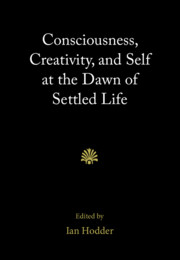Book contents
- Consciousness, Creativity, and Self at the Dawn of Settled Life
- Consciousness, Creativity, and Self at the Dawn of Settled Life
- Copyright page
- Contents
- Contributors
- Acknowledgments
- Part I Introduction to the Themes, Site, and Region
- Part II Higher Levels of Consciousness
- 3 When Time Begins to Matter
- 4 Cognitive Change and Material Culture
- 5 Conscious Tokens?
- 6 Brick Sizes and Architectural Regularities at Neolithic Çatalhöyük
- Part III Greater Innovation and Creativity
- Part IV Greater Awareness of an Integrated Personal Self
- Notes
- Index
- References
4 - Cognitive Change and Material Culture
A Distributed Perspective
from Part II - Higher Levels of Consciousness
Published online by Cambridge University Press: 22 February 2020
- Consciousness, Creativity, and Self at the Dawn of Settled Life
- Consciousness, Creativity, and Self at the Dawn of Settled Life
- Copyright page
- Contents
- Contributors
- Acknowledgments
- Part I Introduction to the Themes, Site, and Region
- Part II Higher Levels of Consciousness
- 3 When Time Begins to Matter
- 4 Cognitive Change and Material Culture
- 5 Conscious Tokens?
- 6 Brick Sizes and Architectural Regularities at Neolithic Çatalhöyük
- Part III Greater Innovation and Creativity
- Part IV Greater Awareness of an Integrated Personal Self
- Notes
- Index
- References
Summary
Whichever way one looks at it, studying ancient minds is a challenge. This is largely because the main investigative strategies that have proven to be so successful in unravelling the secrets of modern minds are rendered unavailable. Long-dead subjects cannot sign up for reaction time laboratory experiments, and decomposed brains aren’t suitable for neuroimaging. Call this epistemological quandary ‘the problem of ancient minds’. Given that the questions addressed by this volume concern the existence and character of changes in consciousness and cognition at the Neolithic site of Çatalhöyük, there seems little doubt that the problem of ancient minds will be prowling the pages of the various chapters, just itching to make a nuisance of itself.
- Type
- Chapter
- Information
- Publisher: Cambridge University PressPrint publication year: 2020



